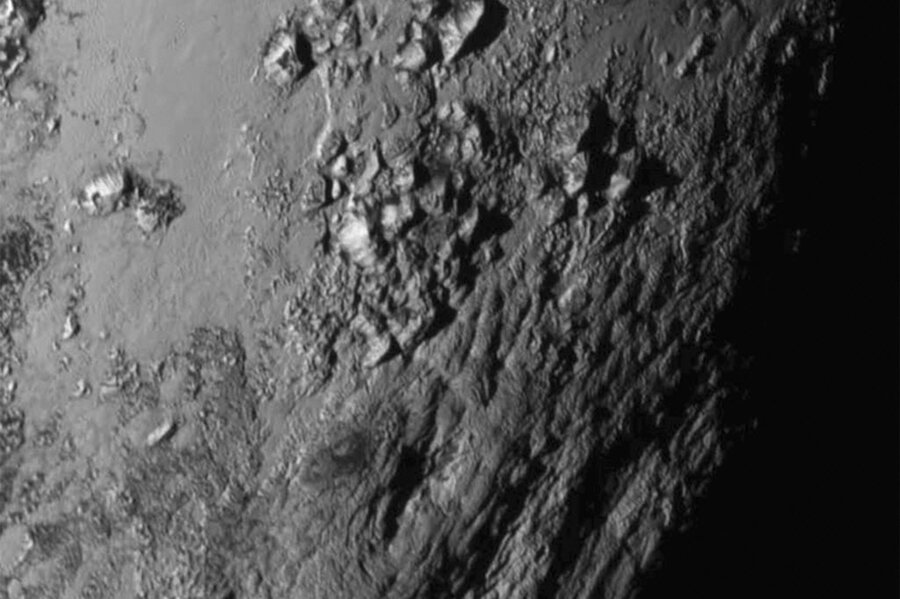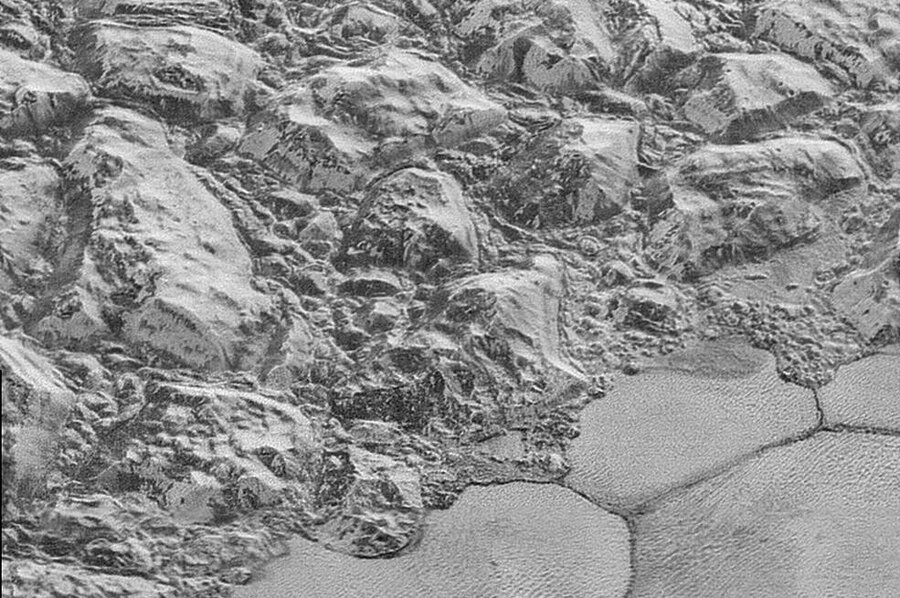These are the clearest photos of Pluto yet
Loading...
Images NASA recently captured of Pluto were black and white, but that didn’t keep them from being some of the clearest, most vivid close-up shots of Pluto’s surface that humans have ever seen.
Captured by NASA’s New Horizons spacecraft, launched in 2006 to fly past Pluto, the photos show craters, huge mountains, and smooth nitrogen ice fields that extend for at least 50 miles. The images were captured in July when New Horizons conducted its closest flyby of Pluto, and were among the most recent batch sent back to Earth.
“New Horizons thrilled us during the July flyby with the first close images of Pluto, and as the spacecraft transmits the treasure trove of images in its onboard memory back to us, we continue to be amazed by what we see,” said John Grunsfeld, a former astronaut and the associate administrator for NASA’s Science Mission Directorate. “These close-up images, showing the diversity of terrain on Pluto, demonstrate the power of our robotic planetary explorers to return intriguing data to scientists back here on planet Earth.”
It took scientists decades to develop technology that could fly past Venus or Mars – planets much closer to Earth than Pluto.
“These new images give us a breathtaking, super-high resolution window into Pluto’s geology,” said New Horizons Principle Investigator Alan Stern of the Southwest Research Institute. “Nothing of this quality was available for Venus or Mars until decades after their first flybys; yet at Pluto we’re there already – down among the craters, mountains and ice fields – less than five months after flyby! The science we can do with these images is simply unbelievable.”
Slate's Bad Astronomy blogger Phil Plait enthuses:
Pluto is so cold water ice is hard as rock, and can form mountains thousands of meters tall. The bright plain was probably lower elevation terrain which filled with nitrogen, which is much less rigid than water at these temperatures. It can flow like glaciers do on Earth. So what you’re seeing there is a shoreline! It really looks like one, too, with the nitrogen ice meeting the highlands at a “constant sea level”.
The images were captured from a range of just 10,000 miles away using a telescopic Long Range Reconnaissance Imager, which snaps photos every three seconds instead of pointing and shooting – a mode that requires extremely short exposures or the images will be blurry. They are the best images NASA has captured of Pluto to date; according to NASA, they are five times better than images captured of Pluto’s cousin Triton by Voyager 2 in 1989.
More images are expected to come in the next few days, showing more high-resolution terrain.
Following the flyby of Pluto, the New Horizons probe continues to move deeper into space. Presently, it’s about 3.2 billion miles from Earth. It’s projected to fly by another object known as 2014 MU69 in the next three years.
[Editor's note: The original post incorrectly stated the path of the New Horizon mission]









